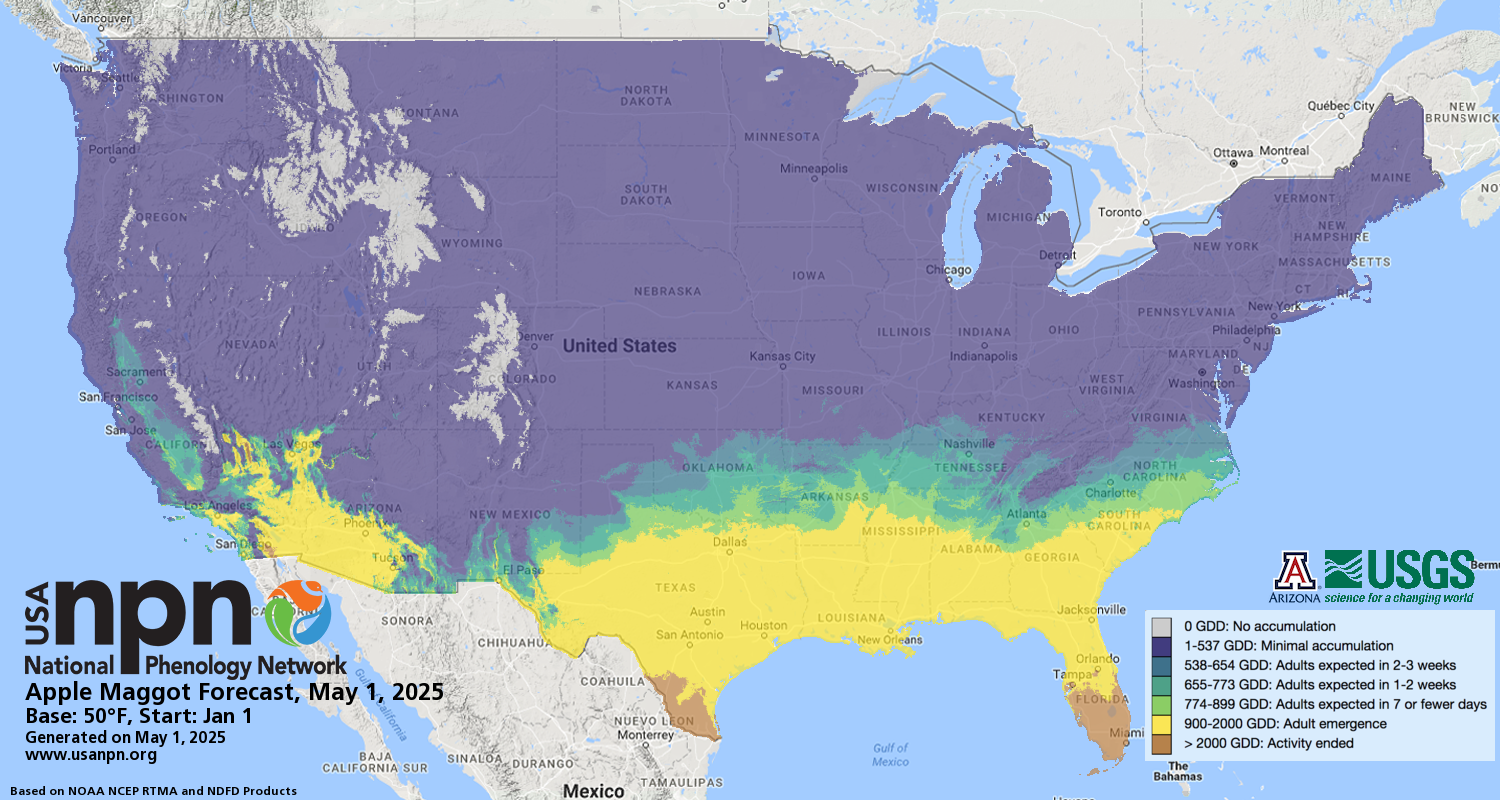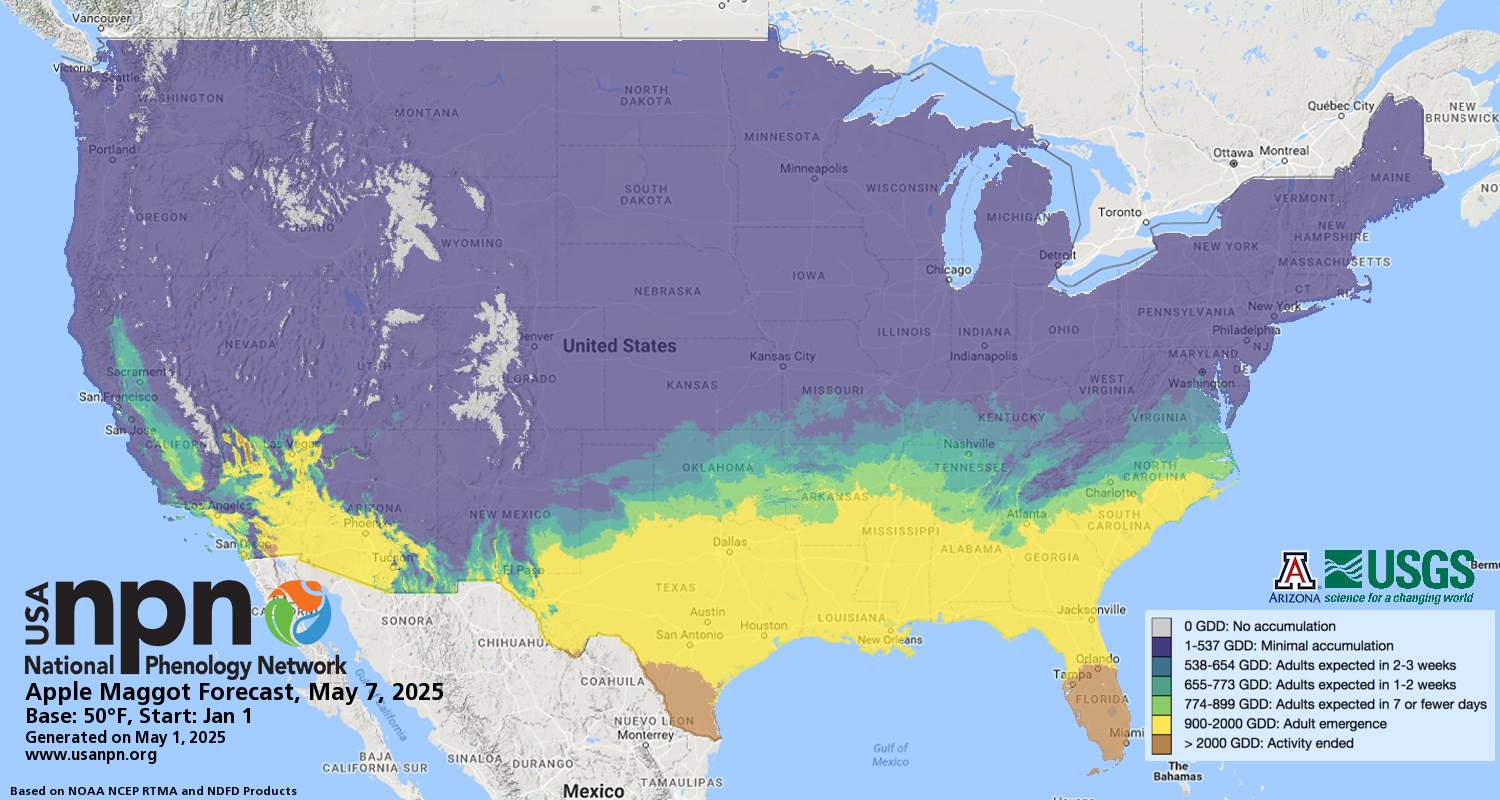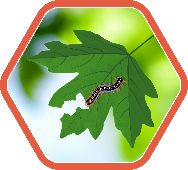Due to technical difficulties, this Pheno Forecast is not currently being updated for 2025. Please check back next year for updated map status.
Apple maggot larvae cause damage to ripening fruit. If left untreated, these pest insects can spread across the entire tree. These insects primarily affect apple trees, but can also impact plum, apricot, pear, cherry and hawthorn trees.
WHAT ARE PHENO FORECASTS?
Pheno Forecast maps predict key life cycle stages in invasive and pest species, to improve management efficacy. For insect pest species, Pheno Forecasts are based on published growing degree day (GDD) thresholds for key points in species life cycles. These key points typically represent life cycle stages when management actions are most effective. These maps are updated daily and available 6 days in the future.
Help us improve these maps! Our Pheno Forecast map products are still in development, and we seek input on their performance in your area. Give your feedback at the bottom of the page.
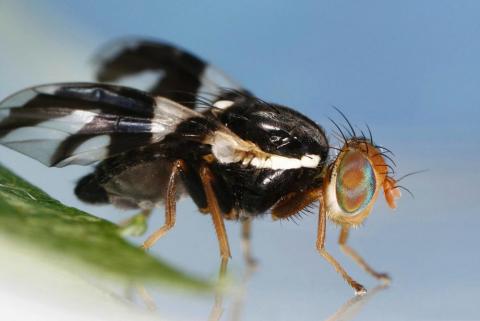
Species Background
Native to the eastern states, apple maggot (Rhagoletis pomonella) is widespread throughout the U.S. In late spring and summer, adults emerge from the soil and lay eggs in apples. The larvae tunnel into the fruit, causing decay and rot.
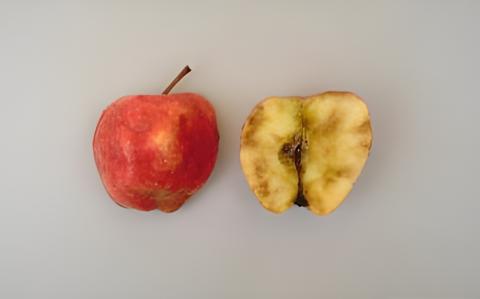
Adult Forecast
We forecast adult emergence based on growing degree days. Apple maggot can be controlled by bagging the fruit, trapping, and spraying with pesticide. In all cases, treatments are most effective if initiated as adults are starting to emerge from the soil. Ideally, treatments are undertaken prior to egg-laying, which occurs ~8-10 days after emergence. The Pheno Forecast map indicates when apples should be protected from maggots using mechanical or chemical methods.
For specific information on preferred treatment options in your region, we recommend contacting your local extension agent. For more information, visit University of Minnesota Extension, Michigan State University Extension, or Washington State University Tree Fruit Research & Extension Center.
EXPLORE THIS FORECAST
Learn more about this forecast using our visualization tool!
|
Phenophase |
GDD threshold |
Base temp |
Start date |
GDD method |
Model origin |
Source |
|---|---|---|---|---|---|---|
|
Adult emergence |
900-2000oF |
50oF |
Jan 1 |
Simple average |
MI |
More information on map development and re-use policy.
